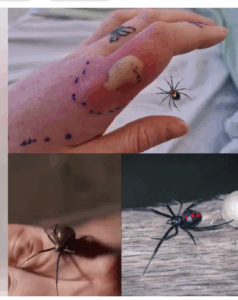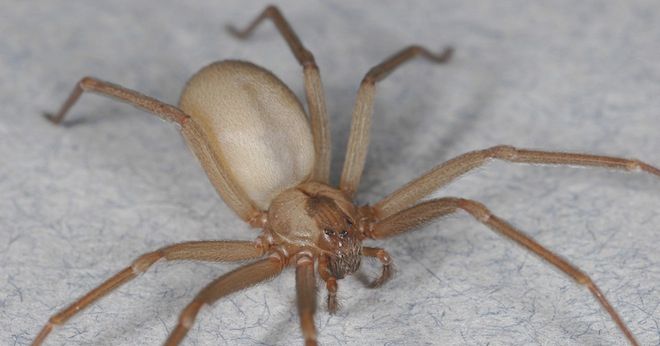Understanding and Managing Bites from Black Widow and Brown Recluse Spiders
When it comes to spider bites, two species stand out due to the potential dangers they pose: the Black Widow spider (genus Latrodectus) and the Brown Recluse spider (genus Loxosceles). Both have venom that can lead to serious medical conditions, necessitating swift action and appropriate medical intervention. In this comprehensive guide, we delve into how to identify these spiders, what to do in the event of a bite, and most importantly, how to prevent these potentially dangerous encounters. Understanding these factors is crucial not only for individual safety but also for promoting a wider awareness of the ecological roles these spiders play.

Understanding the physical characteristics of these spiders is crucial for identification and subsequent prevention. The Black Widow spider is easily recognized by its glossy black exterior and the distinctive red hourglass shape on the underside of its abdomen. This species is primarily nocturnal and often seeks refuge in undisturbed areas such as woodpiles, corners of garages, and sheds. Notably, female Black Widows are significantly larger than males and are more likely to bite when they feel threatened. Initially, a bite from a Black Widow may not trigger immediate pain, but it can escalate quickly, typically manifesting intense pain, muscle cramps, sweating, nausea, and in severe cases, difficulty breathing within 15 to 60 minutes. The severity of the symptoms can vary depending on the individual’s health and the amount of venom injected. check below!!
Your home should be a safe space—but occasionally, it can harbor hidden dangers that are best left to professionals. From certain types of venomous wildlife to toxic mold, it’s important to know what to avoid and how to respond safely.This guide explores potentially harmful household encounters backed by verified information from health and environmental agencies. When in doubt, remember: Don’t touch—get help.
1. Brown Recluse Spider (Loxosceles reclusa)
While many household spiders are harmless, the brown recluse spider is one species that poses medical concern. Found primarily in the Midwestern and Southern United States, it typically hides in dark, undisturbed areas such as closets, basements, attics, and behind furniture.The brown recluse can be identified by a distinct violin-shaped marking on its back. Although bites are rare and usually occur when the spider is accidentally pressed against skin (e.g., while dressing), they can cause localized tissue damage and, in rare cases, systemic symptoms.

What Experts Say:
According to the Centers for Disease Control and Prevention (CDC), the reaction to a brown recluse bite varies widely. Some bites may heal without intervention, while others may lead to serious skin necrosis. Immediate medical attention is recommended if you suspect a bite.
These are the signs that he is cr… See more

Mouth and Oral Cancer Specialist Doctor in Delhi Home Types of Cancer
Mouth cancer is a type of cancer of the throat and head and is often treated as such. Mouth cancer mostly occurs after the age of 40, and men are more prone to it than women. A total of 77,003 new cases of mouth cancer have been registered in India this year and 52,067 people have died. Oral cancer is detected when it has spread to the lymph nodes in your neck and if oral cancer is detected early, the risk of life is low.
Types of Mouth Cancer (Oral Cancer)-
Lip Cancer Tongue Cancer Inner Cheek Cancer Gum Cancer Cancer of the lower part of the mouth You should see your dentist as soon as you see symptoms of oral cancer. According to the dentist, at least twice a year, get your mouth examined by your doctor. Let us know about its symptoms, dangers, its stages. And you can meet Mouth Cancer Specialist Dr. Sajjan Rajpurohit
Symptoms of Mouth Cancer (Oral Cancer):-
In the early stages of mouth cancer, it is not detected and there are no symptoms, but people who smoke or drink alcohol on a daily basis should have their mouth checked from time to time by their dentist.
The Main Symptoms of mouth cancer (oral cancer) are as follows-
Non-healing blister on the lips or mouth Mouth enlargement Bleeding from the mouth Loose tooth Mouth pain or difficulty swallowing Sudden lump in the neck Earache Sudden weight loss Numbness of the lips, face, neck, or chin Red and white patches on the mouth or lips Throat pain Dry mouth Jaw pain or stiffness Tongue pain Although having these symptoms doesn’t mean you have mouth cancer, you should definitely see your dentist and continue to check on them from time to time after your visit. Some of these symptoms, such as a sore throat or earache, can also indicate some other illness. However, if you notice any of these symptoms, especially if they do not go away even with the first treatment or if there is more than one symptom at a time, do not ignore them and do not ignore them as soon as possible. See your dentist or doctor as soon as possible and get the proper treatment.
Cause of Mouth cancer (Oral Cancer) Smoking: Smoking is the most common cause of mouth cancer, and people who smoke cigarettes, cigars, or pipes have the highest risk of mouth cancer.
Consumption of tobacco: If you say tobacco in any form, then it can also become a major cause of oral cancer.
Drinking alcohol in excess.
Mouth cancer stages
The stages of oral cancer increase as follows-
Stage 1: In this stage, the tumor is less than 1 inch in size and has not reached nearby lymph nodes.
Stage 2: The tumor grows to 1 to 2 inches and has not reached nearby lymph nodes.
Stage 3: In this stage, the tumor grows to about 2 inches but does not spread either; it does not grow more than 1 inch but has spread to nearby lymph nodes.
Stage 4: Cancer in this stage has spread to the mouth and cancer affects the tissues around the mouth, lips, and possibly nearby lymph nodes; Or it spreads to the rest of the body.
The stages of cancer tell how it can be treated as well as how likely it is to be cured.
Treatment of Mouth Cancer:- Some common treatments for mouth cancer are as follows:
Surgery: In this procedure, an operation has to be done to remove the tumor from the entire mouth. A small incision is made in the neck or jaw so that the place where the tumor is located can be easily removed. After the tumor is surgically removed, that part of the mouth is reconstructed. In these cases, surgeons may perform pedicle or free flap reconstruction.
Read more about Robotic Surgery
Radiation Therapy: Radiation therapy involves the use of radiation technology to treat the area of the mouth where cancer has spread and healthy tissue is spread over that place. External beam radiation therapy (EBRT) and brachytherapy are the two most common radiation therapies used to treat oral cancer.
Read more about
Chemotherapy: Chemotherapy often combined with radiation therapy is used to destroy cancer cells throughout the body using anticancer drugs to remove cancer. Cancer cells are destroyed at different stages by mixing different chemotherapy drugs.
Read more about
Targeted drug therapy: Targeted drug therapy directly strikes the cancerous cells to eliminate them from their roots and stops the cancer cells from growing. This therapy can be used in combination with both chemotherap
Some important facts about Mouth Cancer:- About 80% of Mouth Cancer cases are due to tobacco use alone.
The average age of getting mouth cancer is 50 years.
Mouth cancer rates in men are much higher than in women and these rates increase with age.
If the symptoms of mouth cancer are recognized and treated at the very beginning, then your chances of survival increase by 82%.
Similarly, if it is identified and treated in the advanced stage, then the survival rate is up to 27%.
As soon as the symptoms of mouth cancer are seen, the dentist should be shown immediately and it should be treated properly without delay. It is often seen that Indian people do not take special care of oral health, due to which they have to face a lot of oral diseases. To avoid all kinds of oral problems, visit the dentist regularly and take special care of your oral and oral health.